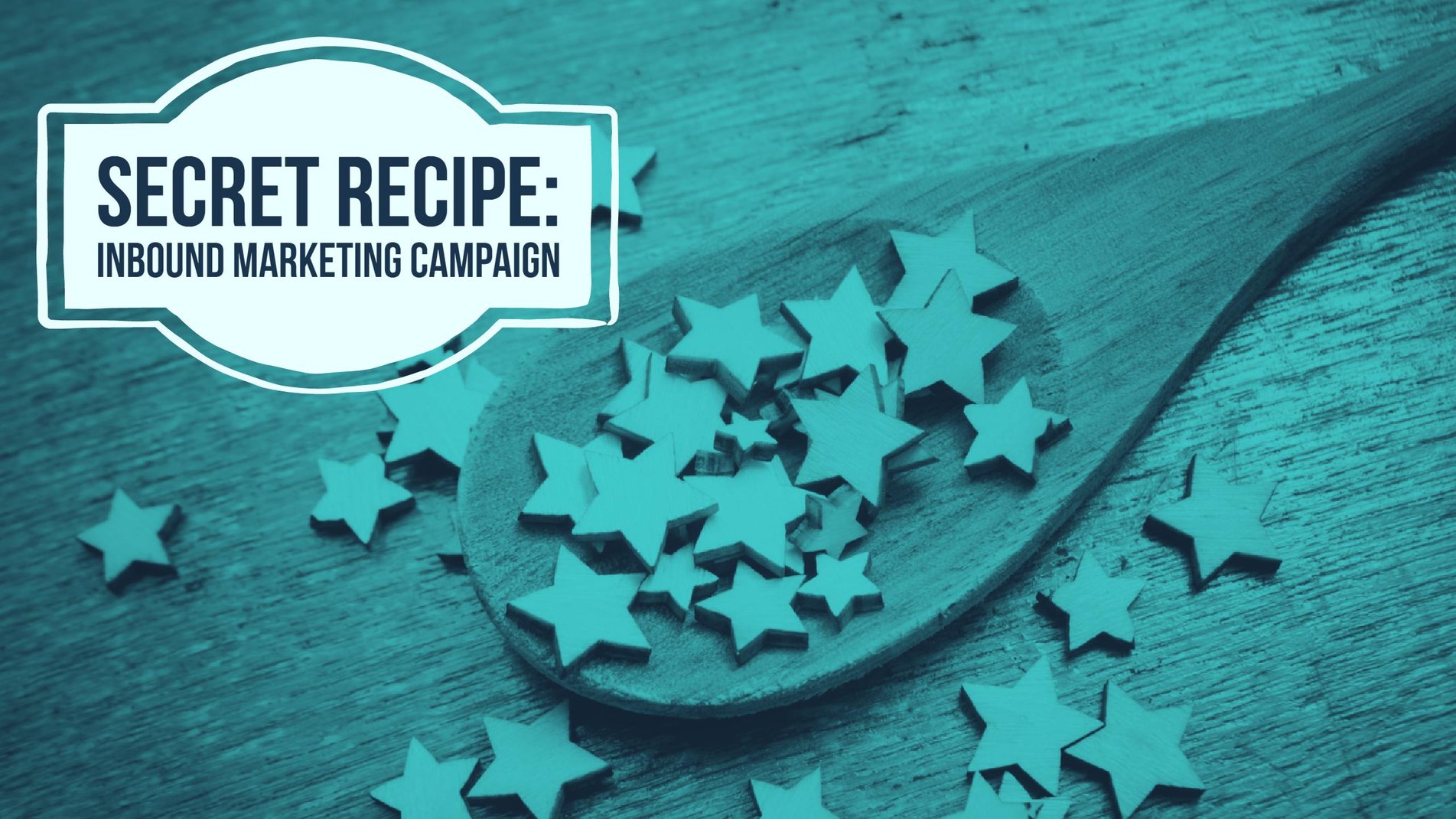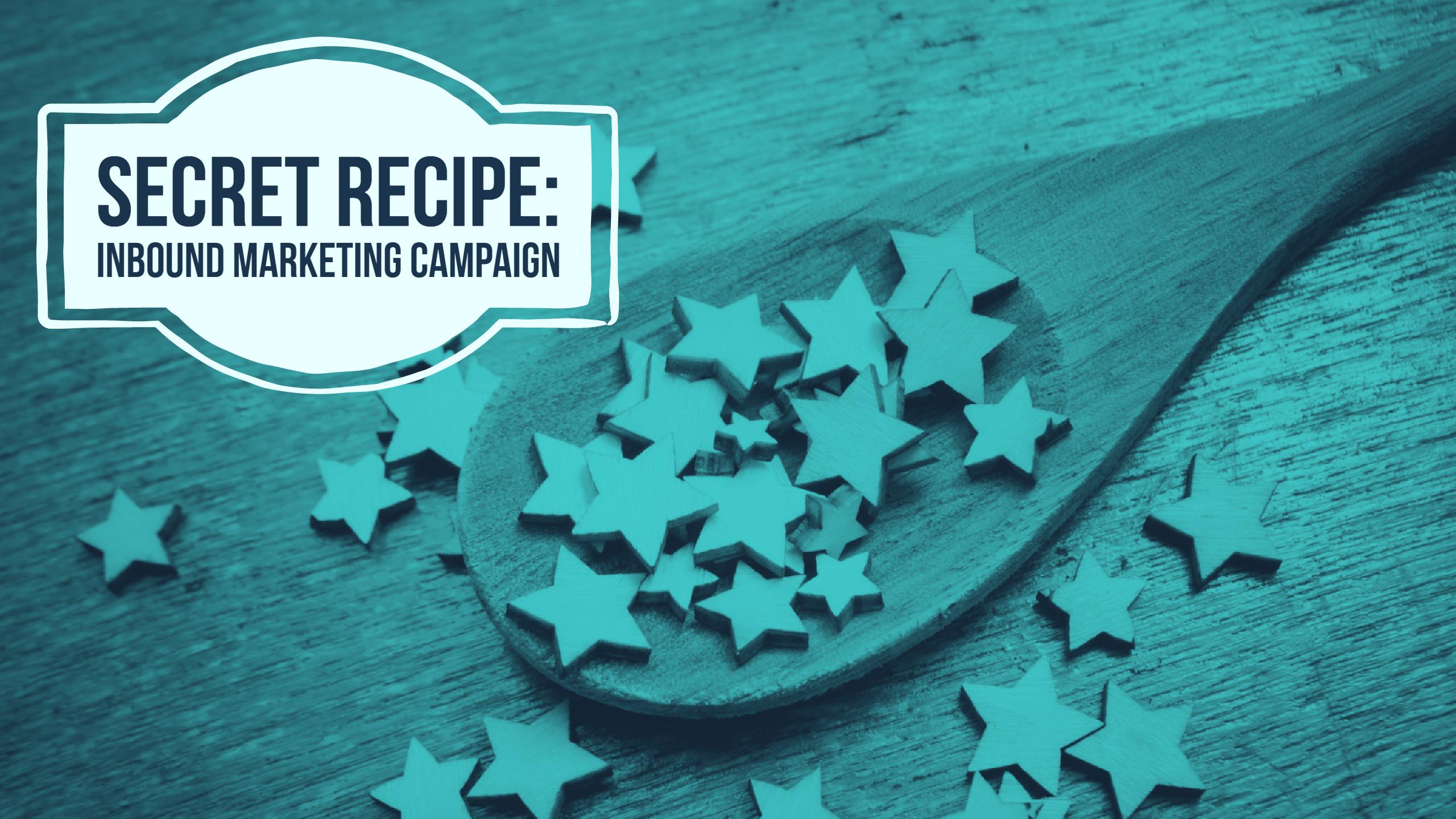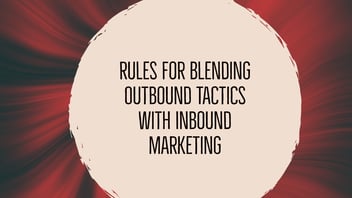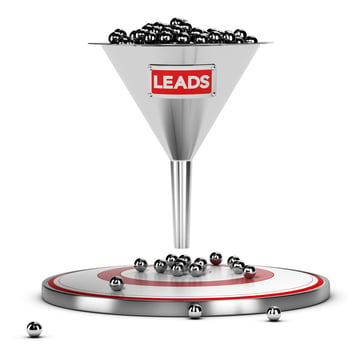My Secret Recipe for a Winning Inbound Marketing Campaign

Thanksgiving is just around the corner, Christmas following close behind, which means people like me who love to cook are knee-deep in Pinterest, Instagram, and even old family cookbooks picking out the perfect menu for the family dinners, cocktail parties, and cookie bake-offs those holidays bring.
As I skim over recipes, it is fascinating to see how even two recipes for the same basic dish can be quite different. Consider the Thanksgiving dressing (or do you call it stuffing?): there have to be a million and one different ways to make it, from the Stove Top stuffing variety to grandma’s recipe in faded scrawl on an index card that requires starting by making fresh cornbread several days in advance, and the ones with secret ingredients that no one else expects. Which recipe you choose will depend on things like your cooking skill level, the time you have to devote to it, and the cost of the ingredients.
Inbound marketing can be a little like cooking. There are a ton of recipes out there, and which one is right for you depends on those same factors: in-house experience and expertise, time available and budget.
Regardless of the recipe, however, there are a few essential ingredients in every inbound marketing campaign. Let’s review them, and then look at how you can tweak the most basic recipe to make it fit your needs.
Inbound Marketing Campaign Ingredients
Ingredient: Downloadable asset(s)— Basic quantity: 1/month
The first ingredient in an inbound marketing campaign is a downloadable asset (or more than one). Assets or offers are the valuable pieces of content that readers will be willing to share their contact information to access — original research reports, webinars, case studies, useable templates, or ebooks and whitepapers. Every campaign needs at least one, created with a specific buyer persona in mind.
If you are creating only one, you will likely want to focus on something that addresses the awareness level of the sales funnel. This introductory material should be useable and informative, not sales-oriented.
But a little like eggs in a cake, if one is good, two are likely to make it richer and more satisfying. Adding an additional downloadable asset targeting leads that are reaching the comparison and consideration stages of the funnel provides an opportunity for further nurturing to warm up cool leads and move them toward a sale.
MAKE IT BETTER: Double the number of downloadable assets, reaching additional levels of the sales funnel. More assets means more landing pages, and when companies increase the number of landing pages from 10 to 15, they see a 55 percent increase in lead generation.
Ingredient: Blog posts—Basic quantity: 4/month
Blog posts complement and promote the downloadable assets. Every blog post written in conjunction with the campaign should have a call-to-action linking to the landing page for a related asset.
Blog posts add more depth to the campaign, providing additional SEO power for your website by increasing content with the information and topics your prospects are searching for and acting as a conduit to send visitors to the landing pages for your downloadable assets.
At a bare minimum, if you are going to do inbound marketing, you should be blogging at least once a week. That is really just enough to start the process of building a body of content that attracts enough traffic to drive meaningful lead generation. But at one post a week, your program will take a long time to get going.
HubSpot says that at a rate of 10 blog posts per month it takes 3 months to build a sufficient volume of content to see an impact: 120 blog posts. Imagine how long that would take at only 4 posts per month? And you thought thawing out a frozen 25-pound turkey took a long time.
MAKE IT BETTER: Companies that publish 11 blog posts per month generate 4 times as many as leads as those who blog only 4-5 times a month.
MAKE IT BEST: Bump it to 16+ blog posts per month for 4.5 times more leads.
Ingredient: Social media—Basic quantity: 1 update per asset and blog post in each targeted channel
Social media updates and links promote both the blog posts and the individual assets, bringing interested readers to landing pages where they can access the downloads and be converted into leads.
Again, you could do the bare minimum, boxed-Stovetop-Stuffing version of the inbound marketing recipe, but it really doesn’t take much more effort to add a little extra flavor and write a few more updates.
Social media is one place where you take the tastes of (the bulk of) your audience into consideration in order to focus energy where it gains the best returns. You don’t have to use every social media platform out there, just as you don’t have to conform your menu to please every individual vegan, organic-only, doesn’t like garlic, won’t eat anything green, selective palate in your extended family.
Choose the social media channels most relevant to the majority of your prospects, and focus attention there. You could always ask those with extremely strong feelings about it to contribute to the potluck (aka - encourage brand evangelists to share your content on their social media channel of choice).
While the concept of inbound marketing is based around bringing prospects to your site organically, the reality is that on the world’s most popular social media network, Facebook, only 2-6 percent of followers see your organic posts. (More on how digital marketing is changing, from our partner HubSpot.) You may need to add some targeted paid promotions to get the most mileage from your social media presence.
Once you’ve written your social media updates promoting your assets and blog posts, schedule them to extend beyond the official scope of this individual campaign—inbound marketing content should have a lasting impact on your traffic and lead generation.
MAKE IT BETTER: 3 updates/channel for each asset and post.
MAKE IT BEST: 5+ updates/channel for each asset and post, and consider targeted paid promotions in addition to organic posts.
Ingredient: Outbound email(s)—Basic quantity: 1 per asset
Inbound marketing’s content can be used in conjunction with outbound tactics as well, by using targeted outbound emails to promote the downloadable assets to a carefully maintained contact list.
The key words here are “targeted” and “carefully maintained contact list.” Outbound emails are like the highest quality spices: best used sparingly. Include them in everything, and they lose impact. Use too much in any one dish (campaign) and they are overpowering.
Focus outbound emails to contacts who have opted-in to your list, and where possible segment to send them to only those contacts who fit the buyer persona for that specific downloadable asset.
If you want to spice it up just a little more, consider a second round sent only to those contacts who didn’t open the email the first time around.
MAKE IT BETTER: Resend with a new subject line and title to unopened addresses.
Ingredient: Landing pages and lead nurturing emails—Basic quantity: 1 complete workflow per asset
Landing pages and nurturing workflow emails are the tools for capturing leads and engaging them as they move through the sales funnel toward a purchase.
Once a landing page form is filled out, the reader (now a lead) should immediately receive the first of an automated set of emails that not only provide access, via a link, to the offer but also link to additional assets or offers targeted to stages further along the sales funnel that are closely related to the original asset. Most leads aren’t ready to buy the first time they visit your site. The series of nurturing emails and landing pages is the tool that converts leads into sales.
Lead nurturing is like a multi-course meal, or maybe even a Spanish tapas cocktail party for those adult-only holiday gatherings, with each small bite leading closer to a big finish (the sale).
Nurtured leads produce, on average, a 20 percent increase in sales opportunities compared to non-nurtured leads. (Source) That sounds like sweet desserts to me.
MAKE IT BETTER: Increase your landing pages’ appeal and conversion rate by including one or more of the following: video, testimonials, and sharing buttons.
MAKE IT BEST: Spice up sharing options even more by making the testimonial or a statistic into a “tweet this” single-click.
What kind of cook are you? By the book, follow the recipe to a T? Or approximation, throw together what sounds good? Either way, it helps to start with an idea of what you want the end product to taste like. Take a closer look at the ingredients and results of an actual successful inbound marketing campaign in our Creating A Winning Inbound Campaign download.
And if, like some people, you would rather spend more time mingling with guests than slaving in the kitchen, there are options for you, too: Why We Need A HubSpot Partner Agency.
Now, who’s hungry?
-1.png?width=1652&height=294&name=Jones(RGB)-1.png)












